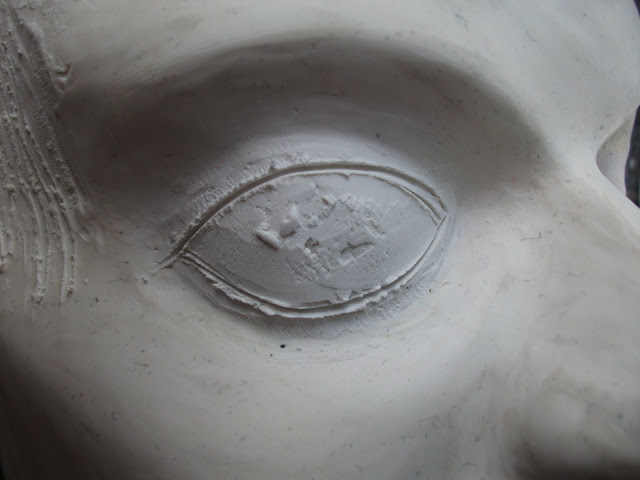It’s odd looking at the life-cast because it actually doesn’t look very much like me at all! It was made with me lying down and something about the process has meant that the original mold has stretched somehow. When compared side-by-side with my face (which I won’t be doing here), it as if I’m holding a cast of someone else!
Anyway, here are the photos of the sculpture:
The lines scratched into the surface are from using the rake tool (as seen below at top). That was to remove excess clay from the areas that needed trimming back and to shape the curves of the temple and cheeks. These will then be smoothed with the fingertips. You can also see that the second and third tools from the top have latex covered tips, for gentler sculpting in tricky areas, such as around the eyes.
As seen in the photo above and below, the eye is too large and the eyelids are too defined, rather like a classical statue.
The picture above shows a temporary nostril dent. This is in the wrong place - it is too far to the viewer’s left and will therefore be changed. The nose itself is too bulky and needs streamlining.
Layering clay over the eye, having first removed the eyelids.
Having smoothed down the clay, I’ve now cut in the basic shape of the new eyelids.
I’ve now begun creating a rough eyeball so that the eyelids are exposed.
(above and below) Further refinements for the eye, but not yet finished. I’ve also smoothed down the raked areas of the mask. I’ve also added further bulk to the ridge of the brow above the nose.
Next Post: Further photos as the work progresses.











